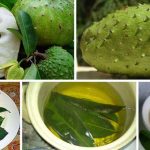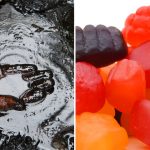The common mineral deficiency that CAUSES breast cancer (Eat THESE foods to reverse it)
Breast cancer is a pretty common type of cancer in the U.S., and even one in eight women in the United States is diagnosed with breast cancer. This type of cancer is the leading one among women in the U.S. and, despite the fact that breast cancer rates have been decreasing, breast cancer still kills about 40,000 of women in the U.S. every year. But, did you know that you can reduce your risk of developing breast cancer simply by making sure you take in sufficient amounts of a certain mineral?
Benefits of Iodine
Iodine is a mineral vital for the appropriate function of the thyroid gland. About sixty percent of the iodine present in the human body is stored in the thyroid gland, as it helps it in producing and releasing hormones that regulate the base metabolic rate of your body. In other words, getting an appropriate amount of iodine ensures that the calories you take in go towards energy production instead of being stored as body fat. Iodine also helps the digestion and improves the absorption of various minerals such as calcium and silicon.
Not only does iodine help the average person in terms of weight management and energy levels, but it is also incredibly significant for pregnant women. According to research, women with low levels of the hormones produced by the thyroid gland are at risk of giving birth to babies with development delays. This is the result of the fact that during the first ten weeks after conception the fetus is fully dependant on the mother in terms of supply of thyroid hormones. The initial ten weeks are also very critical for brain development, meaning that it is amazingly important for a pregnant mother to have enough iodine in their system in order to promote thyroid health and hormone production.
Lack of iodine in the system has also been associated with an increased risk of breast cancer.
Iodine Deficiency and Breast Cancer Risk
Researchers have revealed that iodine has cancer preventative properties that are the result of its either direct or indirect interaction with estrogen pathways.
Even though the estrogen is a natural and necessary hormone, it has been associated with an increased risk of breast cancer. This is also confirmed by the fact that breast cancer is much more prevalent among women than men. According to numerous experts, estrogen adds to breast cancer development because of the fact that it triggers breast cell division as well as its effect on other hormones that trigger breast cell division. This hormone also promotes the growth of tumors that are responsive to estrogen.
According to researchers, iodine can help people prevent breast cancer risk by reducing this breast cell proliferation. This is achieved by the fact that iodine reduces the estrogen-induced growth of breast cells through hindering the response of estrogen to these cells. Iodine also inhibits estrogen’s response by controlling the proteins involved in estrogen’s metabolism and reducing the inhibition of an estrogen response inhibitor.
A Japanese study has discovered that a commonly eaten seaweed food that contains great amount of iodine was able to suppress breast cancer and tumors in rats that consume it. This study has shown that those rats who were induced with breast cancer but had previously eaten this seaweed and food high in iodine did not develop breast cancer or tumor. However, another, controlled group of rats that did not eat seaweed did get the tumor they were induced with. This seaweed is a very frequent snack in Japan, and people in Japan eat high amounts of this seaweed. This has most likely led to the low prevalence of breast cancer in Japanese people, which is almost half as much as in the United States.
The American Thyroid Association claims that about forty percent of the world’s population is at risk at being deficient in iodine. Besides the other health issues that come along with iodine deficiency, this condition also means that these people are at a greater risk of developing breast cancer than the average person. These are several of the symptoms of iodine deficiency you should look out for:
– Goiter
– Coarse skin
– Constant frustration
– Poor levels of perception
– Reduced fertility
– Abnormal weight gain
– Depression
In some cases that are more serious, children whose mothers were iodine deficient during their pregnancies can be born with numerous health issues like mental disabilities and physical malformations.
How to Increase Iodine Intake
Iodine is present in great amounts in all marine plants and animals, most likely thanks to the salty environment that they live in. here is a list of some natural sources of iodine:
– Lobster
– Halibut
– Herring perch
– Deep-water whitefish
– Haddock
– Tuna
– Sardines
– Clams
– Oyster
– Sea bass
– Shrimp
– Salmon
People who are fonder of plant-based sources of iodine should consume more of the following ingredients:
– Dulse
– Lima beans
– Soybeans
– Spinach
– Brown seaweed kelp
– Garlic
– Turnip greens
– Sesame seeds
– Summer squash
– Swiss chard
if you want to increase the intake of iodine, you do not only have to eat more of a certain food, but you also need to avoid certain foods. Iodine belongs to the group of halogen elements and thus it follows the law of halogen displacement. In other words, any halogen that weighs more than iodine will replace the lighter halogen. Three halogens that are most frequently present in foods include fluorine, chlorine, and bromine, all of which are heavier than iodine. This is why, in order to get the most benefits out of iodine, you should avoid foods and ingredients that contain these three halogens.
Chlorine is present both in foods and water supplies (especially pool water). some of the foods that contain great amounts of chlorine belong to the cabbage family and the radish family, such as cauliflower, cabbages, tomatoes, eggplants, pepper, Brussels sprouts, potatoes, etc. even though numerous sources of iodine contain a lot of chlorine, including sea salt, the chlorine from these sources is not as bioavailable, ensuring that it is not competition for iodine digestion.
Everyone knows that fluoride is being put into all of the public water supplies we use by the government. This is why it is extremely difficult for us to avoid fluorine. One of the ways to avoid it is to buy spring water, as the majority of brands of spring water contain very low amounts of fluoride. Nevertheless, if you do not want to spend money on water, you can buy a unit for water distillation. Thanks to this device, you will be able to get rid of the most, if not all, fluoride from the water. Still, these units can be rather expensive, ranging from $200 to $1000. the cheapest alternative is to simply buy a Brita filter or boil the water before drinking it.
Bromine is present in different food sources, starting from baked goods and flours that involve ‘dough conditioners’, to soft drinks including Mountain Dew, Gatorade, and Fresca in the form of brominated vegetable oils. Many pesticides, including methyl bromide, used on strawberries grown in California, also contain bromine.
To sum up, if you increase your intake of iodine, you will benefit your health in numerous ways, one of the most important being lowering your risk of breast cancer. If someone you know has been diagnosed with breast cancer, suggest them that they increase the intake of iodine as soon as possible. If you found this information beneficial, tell us in the comment section.
Don’t Forget To Share With Your Friends And Family On Facebook, And Check Our Youtube Channel For More Awesome Videos!
Source: familylifegoals.com
Leave a Reply
You must be logged in to post a comment.




